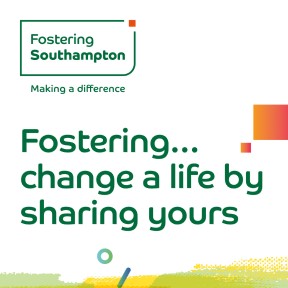Working Together to Safeguard Children
Working Together to Safeguard Children (usually just referred to as Working Together) is statutory guidance produced by the government that outlines how practitioners working with children, young people and families should work together in order to make sure that children and young people remain safe from harm.
In this guidance, a child is defined as anybody under the age of eighteen. The guidance does also apply to the safeguarding of unborn children.
Why do we have Working Together?
The Working Together statutory guidance was first published in 1999 to set out how all agencies and professionals should work together to promote children's welfare. In 2006, it was revised following the public inquiry into the death of Victoria Climbié.
Victoria was brought to the UK from the Ivory Coast in 1999 by her great aunt. She died in Haringey in February 2000 at the age of eight. She had sustained serious injuries and had been tied up for long periods. Before her death, Victoria had been in contact with several different agencies, but the inquiry found that none of these had fully investigated and, due to a lack of information sharing between them, none had a full picture of the abuse Victoria was suffering.
The inquiry led to the government’s Every Child Matters green paper. This proposed changes in legislation and policy to maximise opportunities for agencies to effectively safeguard children by working together. This green paper became the Children Act (2004).
The Children Act (2004) placed a duty on all agencies to make sufficient arrangements to safeguard and promote the welfare of children. In 2006, the revised version of Working Together was published.
Four updates to the guidance have been made since 2006:
- 2010 - The focus on interagency working was expanded to take into account recommendations from Lord Laming's 2008 progress report The Protection of Children in England. This emphasised the importance of frontline practitioners getting to know children and young people as individuals
- 2013 - An update was made in response to a review of child protection in England, carried out by Porfessor Eileen Munro
- 2015 - An update was made to focus on the need for Early Help (guide) responses to identify and support the needs of children and young people as these needs emerge
- 2018 - This most recent update continued the focus on early help, as well as focusing on complex and contextual safeguarding. There was also a review of how local safeguarding arrangements are implemented and governed, following a review of Local Safeguarding Children Boards (LSCBs) by Sir Alan Wood in 2017
What changes were made in the 2018 Working Together update?
Working Together 2018 places a statutory duty on three key agencies to hold local responsibility for safeguarding: the Local Authority, the Police and Health (through the Clinical Commissioning Groups — CCGs). It provides these three agencies with the freedom to develop local multi-agency safeguarding arrangements in line with the needs of their locality, whilst removing the statutory requirement for Local Safeguarding Children Board (LSCB). Working Together 2018 provides guidance with regards to what new arrangements in local authorities should include.
The Southampton multi-agency safeguarding arrangements are available on the Southampton Safeguarding Children Partnership (SSCP) webpages.
The guidance also outlines changes in the statutory functions of undertaking Child Safeguarding Practice Reviews (CSPRs), concluding any Serious Case Reviews (SCRs) and the Child Death Overview Process (CDOP). Once a local area has published its new multi-agency safeguarding arrangements, SCRs will be replaced with Child Practice Safeguarding Reviews (CSPRs) which will be undertaken when the local safeguarding partners identify serious child safeguarding cases which, in their view, raise issues of importance in relation to their area and through which new learning can be identified.
What is a serious child safeguarding case?
- Abuse or neglect of a child is known or suspected
- The child has died or been seriously harmed
The statutory responsibility for Child Death Reviews (CDRs) will lie with the CCGs and the Local Authority.
- The criteria for undertaking a CDR has expanded. A CDR will be required for live born babies where a death certificate has been issued. This now includes babies born under 22 weeks gestation
- A Key Worker (this will usually be a healthcare professional) will be allocated, as a single point of contact, to the bereaved family
The guidance also reflects national safeguarding agendas, including an emphasis on areas which are collectively known as complex or contextual safeguarding including children missing (guide), those at risk of, or experiencing exploitation, trafficking (guide) and peer on peer abuse.
Alongside the updated Working Together document, the Government also updated and published Keeping Children Safe in Education 2019 and published Information sharing; Advice for practitioners providing safeguarding services to children, young people, parents and carers.
What practitioners should do
Practitioners should make sure they are familiar with the updated version of Working Together, as well as the Child Death Review Statutory and Operational Guidance (England). These can both be found online.
Training is available through the SSCP on many aspects of safeguarding. To identify which training is right for you, please visit the SSCP website.


